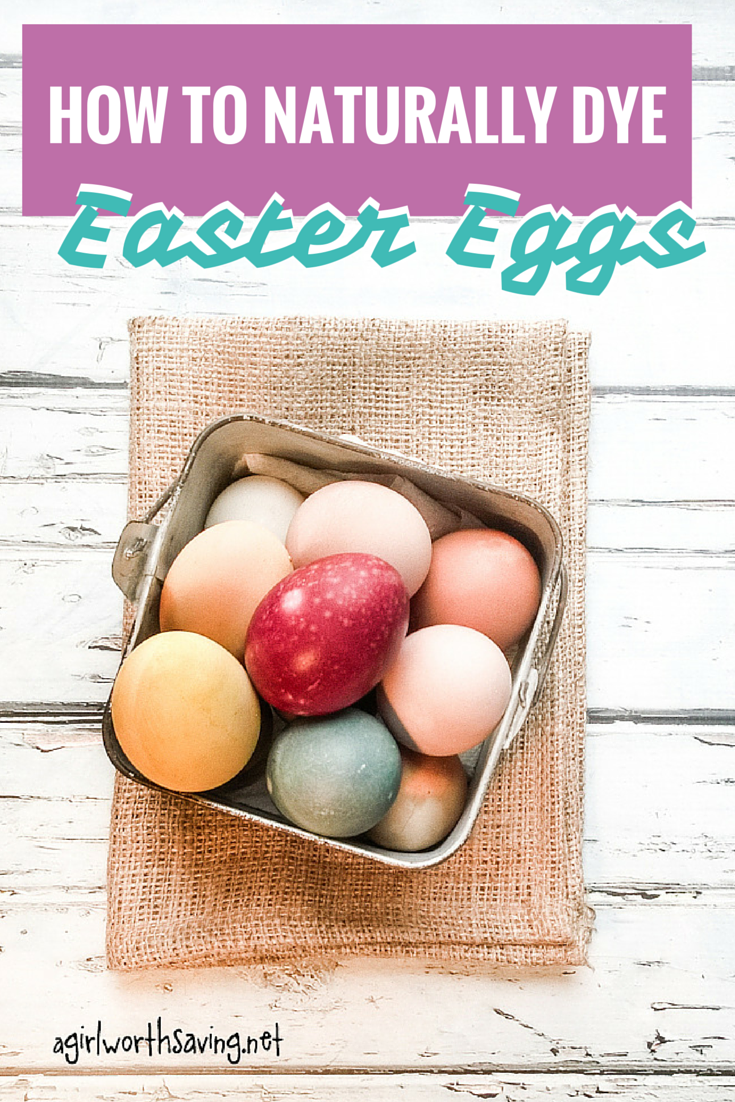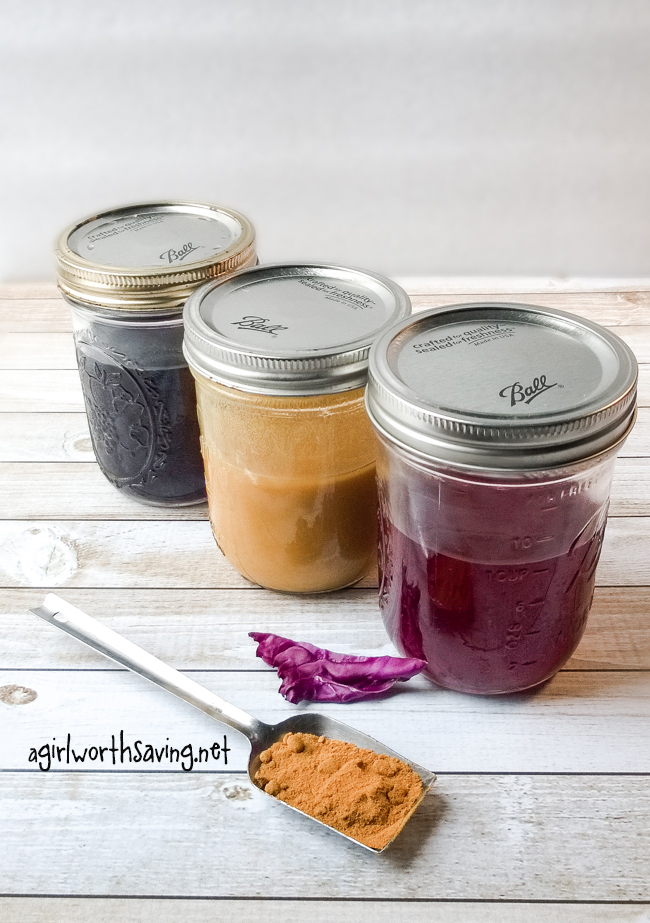This post contains affiliate links. Click here to read my affiliate policy.
Last Updated on April 2, 2015

One of my fondest memories of Easter when I was little, was dying Easter eggs with my grandma and siblings. I loved watching the little tablets of concentrated food dye swirl and dissolve in the water before dipping the eggs in.
As I got older and became more aware of what I was putting into my body, I realized that food dye was on the naughty list. When I had my son, I wanted to be sure that I wasn’t giving him harmful foods, making me even more vigilant.
Food dyes have been under scrutiny for several decades, with multiple studies linking them to hyperactivity and behavioral issues. In response, the European Union required most foods containing dyes to carry a warning label. This prompted many manufacturers to simply eliminate the food dyes added to the European versions. (source)
The American FDA’s response to the issue? They decided the evidence didn’t warrant a warning label or banning of the food dyes (source).

Making your own naturally dyed Easter eggs is a simple and safer solution. Chopped beets, cabbage, onion skins, turmeric powder, henna powder and even berries can be used.
I used both brown and white eggs for this, and for the most part the dyes worked on both types of eggs. It can be hard to find pastured white eggs though, so use light brown if you can’t find white ones.
Naturally Dyed Easter Eggs
You will need:
- Water
- Vinegar
- Glass jars or bowls
- Plant matter
- Hardboiled eggs, washed in castile soap and rinsed
- Strainer
- Pot
- Coconut oil (optional)
Add 2 cups of water to the saucepan and 2 cups of your desired plant matter. If using turmeric or henna, add 1/4 cup of the powder to 2 cups water.
Bring to a boil, then reduce heat and simmer with a lid on for 20-30 minutes. The water will reduce somewhat, but be sure you have about 1 cup of liquid for every egg you want to color.
Strain out the plant matter and add 1 Tbsp of vinegar for every 1 cup of water to the strained food dye.
Pour the dye into your container and carefully add the eggs. For best saturation, put them in the fridge overnight.
Carefully remove the eggs and pat dry with a paper towel. To add a sheen, use a paper towel and buff a little oil onto the shells.

Some Color Options
Beets- Yield a vibrant, deep pink to reddish purple on both brown and white eggs.
Beet stems- Give a light pink color, more visible on white eggs
Turmeric root- Yields a yellow color to white eggs. Other sources report it makes brown eggs look golden, but I couldn’t get it to have an effect.
Purple Cabbage- Turns white eggs blue and brown eggs green.
Henna powder – Turns white eggs a dark, reddish brown.
Purple onion skins- Dyes eggs a purple, red color
Yellow onion skins- Turns white eggs orange and brown eggs rusty orange.


